Base Build ~ Effectiveness Testing

Banging out the miles in winter
But have you done enough?
Base building? Having discussed how to Build Your Base in previous articles, here we're going to ask how do you know when you've built enough? How long does it take to build a solid foundation that's going to sustainably support your whole season?
Do you ride around for three months in Zone 1 and 2, before "transitioning" to harder work? Or are there "magic formulae" to tell you when you're ready for the move towards something more substantial?
As with all things cycling; it depends. But there are tests you can perform on yourself, if you have the right tools, to help you with your decision making and let you know when the time is right to gear up.
Sweet Spot Testing
We use Sweet Spot Sessions in some of our programmes to give an element of
Chronic Training Load without driving up debilitating fatigue.
Ridden correctly, they are a "low impact" session. If ridden at the right pace, you could probably do them five days on the trot without too much trouble. You'd be bored out of your mind, but you would have created 40 TSS points per session without too much effort. So all is not lost.
But these sessions can be used for a dual purpose. They can be just as well used for validating your training as being a training session in their own right. Here's one I prepared earlier...
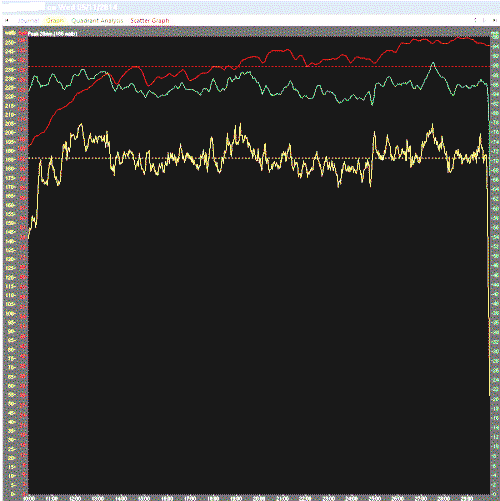
A Post-Base Build, 20 minute Sweet Spot Test
At thirteen minutes there was a slight "comfort shuffle" due to
localised chaffing
To validate if your base building phase has been successful, you can carry out this simple but effective test of your own. It will give you all the information you need in a quick, easy to understand, process.
Obviously, as with all "testing" it's best done on a turbo, with, as far as is humanely possible, all known variables removed.
As an aside; these days they're not called "tests", they are called "Performance Evaluations". As I'm from an era of competitive sports in schools, and the nature of those reading this site are performance related, I'll stick with the old school phrase for the duration of this factsheet.
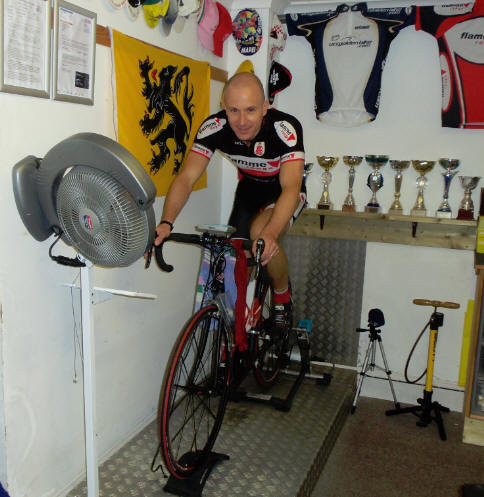
Pre-Training Programme Testing
Before you undertake a training programme, you would be best advised
to carry out a session such as this to give you a baseline of where
your current level of efficiency actually lies.
This shouldn't be confused with an all out performance test to measure effectiveness, from which you determine programme power and heart rate zones.
This is a self-controlled ride at a perception of your choosing. I can already hear the screams of "well how will I know how hard to go"? Trust me, you'll know. It should be "comfortable".
So when you do your first pre-training programme test, you just set up your turbo to simulate a flat road, no wind, no hills, no variations. Have as a minimum, heart rate with speed & distance recording and, if possible, cadence and power.
Do a steady ten minute warm up, to oxygenate the blood and muscles, then ride for 20 minutes at a brisk, but steady pace, followed by a five minute cool-down. Start to finish, thirty-five minutes; sorted.
At the end of this session, you will have a number of parameters against which you can measure your current and future fitness efficiency.
If you've got all of the above, you've got all the info you need to let you know how well your base building has gone when you redo the test at the end of the programme.
Scores On The Doors
Whatever you have when you finish, make a note of it; and put it
somewhere safe. We'll need it later, possibly for the next
five to ten years, against which to make future performance comparisons.
You should have a set of figures for the 20 minute test, that will comprise some, or all, of the following;
▼ heart
rate (avg/max)
▼ speed (avg)
▼ power (avg/max)
▼ cadence (avg)
▼ distance travelled
As this is a pre training season test, it becomes our baseline. All other tests will work from this one, until the season is underway.
Obviously, the fitter you are, the greater distance, speed and average power you will produce for a given heart rate or perception. Conversely, the fitter you are, your heart rate should fall for any given speed, power or perception.
But for these tests, we're not too concerned with the actual numbers in the results, we're mainly interested in the relationship between heart rate and power. If you don't have power measurement, on a turbo (depending on model) average speed or distance will do as, generally, this is a pretty constant and linear relationship.
Once again, to labour the point, the elimination of variables are key to the accuracy of these sessions. So don't do one at six in the morning and your following comparison session at six at night!
And don't do one on a Monday after a heavy weekend's riding, and one on a Wednesday when you've had two rest days. Always compare like with like, always!
To clarify riding levels, these sessions are ridden around 70 to 80% FTP. They are brisk, but not overly so. We're measuring aerobic efficiency, not outright power, speed or "hardness". So no heroics, save it for the races.
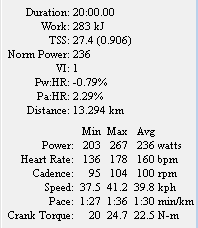 Here's
the results of the ride above, undertaken at the end of our
12 week Base Build Programme.
Here's
the results of the ride above, undertaken at the end of our
12 week Base Build Programme.
All the parameters are there, speed, power, cadence, heart rate (never compare mine with yours (ever!)) and all the other good stuff that comes with a power meter and a copy of WKO+ or Training Peaks.
There are a few other numbers in there that might be relevant and could help us.
But for now we'll just look at the ones for "normal people".
Consistency Is Key?
These sessions can be skewed if you misinterpret the data, or you
"attack the session". So please pay attention.
Obviously, it'd be quite easy to "ride harder" and bang out a ten mile TT on the turbo rather than a Sweet Spot Session, so it's up to you to ride to your correct perception level.
Comparing the speed, power, distance of a 10 mile TT effort to a 20 minute Sweet Spot effort will make you feel much, much better, but won't be a reflection of your increased aerobic efficiency. So there's thirty five minutes of your life wasted. Get it right; as with all analysis rubbish in, rubbish out.
As I've said many times before, I ride all my sessions "blind" and analyse the data afterwards. Don't be a slave to your numbers. You drive the data, don't let the data drive you. Learn to trust your body and instincts. It will pay off massively in the long run.
The parameter we're most interested in for the purpose of this test is the aerobic efficiency marker, the figure we're after is the Pw:HR number.
It's used mainly for long endurance rides, and is an ideal marker for IronMan athletes and endurance TT riders who ride in a steady-state fashion for extended periods of time. But we can make use of it to help us in our quest to validate moving on to our Pre-Comp Programme.
 Steady State De-Coupling
Steady State De-Coupling
The Pw:HR marker, is referred to as de-coupling, a technical term
for cardiac-drift. Which is technical in itself, but
de-coupling is a phrase that refers to the condition whereby a
generally steady-state relationship of two independent systems
starts to diverge.
Although your cardio systems and power-producing muscular systems are independent, they have a relationship. If power goes up, so does heart rate. If power drops, so does heart rate.
The de-coupling algorithms and formulae are complex and to be honest, aren't worth the hassle to work out for a session such as this. But it's easy to see at a glance if you are operating efficiently, even without fancy analysis software.
Generally, for steady-state endurance rides, you're looking for a figure for de-coupling of below 5%. But we don't have the time, or patience, to ride for two hours at a steady state pace to get a marker of our fitness. Life's too short for busy people like us.
So we can use our 20 minute Sweet Spot session to give a quick and dirty indication of our aerobic fitness.
As you can see in the grey box, above right, I know I'm ready, as I have a minus figure for my de-coupling. As I rode my session, my heart rate dropped in relation to my power output. How good is that?
If you've used our Base Build Programme, and ridden it correctly, you can expect your fitness to track mine pretty closely.
As you can see below, my perception changed through out the ride as to what felt "comfortable". This is mainly due to better oxygenation of the blood and muscles. Riding on feel alone, my power crept up, one rev at a time, as the ride progressed.
You'll often find that during sessions your first interval is naff, because you're not yet fully warmed up. The middle one's feel good, then you start getting fatigued and oxygen debt begins to kick in, so the last ones feel naff again!
For this generally steady state ride, although I did gently pick up the pace throughout, my heart rate actually increased at less of a rate than my power. Hence a negative correlation.
The de-coupling figure isn't an indication of the slope of the heart line, it's an indication of the relationship between the two slopes. As you can see, both slopes went up, but the heart slope increased at less of an angle than the power one.
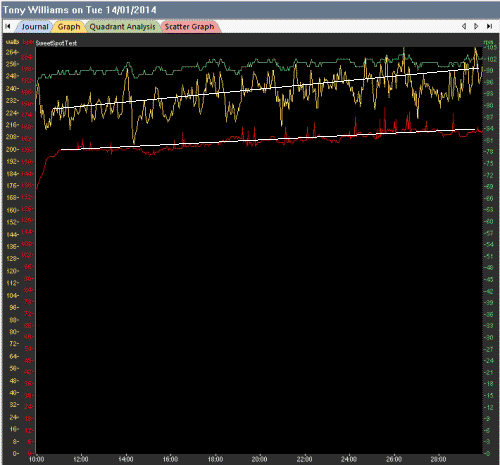
Even without fancy software and algorithms, you can see that the red heart rate "slope" is less than the yellow power slope.
If the heart rate slope is steeper than the power slope, or the heart rate stays elevated when the power drops then you're not fully ready for the transition to the Pre-Comp phase. Try a few more weeks aerobic base work and reap the benefits later on in the season.
Early Season Test?
You can see from a pre-season test below, the heart and power
slopes diverge considerably. I've dropped the heart rate white
line slightly so it doesn't mask the red line, but the "slope" is
accurate.
For this pre-season effort, the de-coupling was over 7%. A sure sign that more (some) base is need to realise efficiency gains.
You can also see, that for the first eight minutes or so, there was no de-coupling, as the red heart line remained flat, as did the yellow power output.
But after eight minutes there is a kick up (which I've cleverly pointed out the obvious to you with a white arrow) when the heart starts to drift upwards and away from the power line.
Which is why we don't train with heart rate! To keep the heart rate flat, we would have to drop our power to such a level we'd be almost at walking pace.
Heart rate is a response (output), power is a stimulus (input). Don't confuse the two. They are two completely different, but complementary things. Concentrating on one or the other in isolation is worthless. Always look at the big picture.
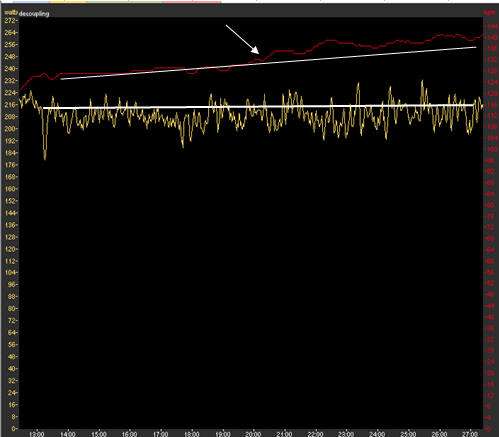
Have I Gone Too Hard...?
Equipe flamme rouge
Road Captain Mick Heald. This wasn't a Sweet Spot session
(thank goodness), but it is indicative of how you have to feel
sometimes if you want to get to a negative de-coupling figure...

You'll be glad to know he recovered quickly!








